The Brave New World of Nouvelle-Aquitaine
- Richard Hammond
- Aug 16, 2024
- 6 min read
As part of our Green Traveller's Guide to Nouvelle-Aquitaine, Richard Hammond and Nicola Forsyth reconnect with nature by train, bike and foot on a journey around southwest France
Grapes: PatrickHutter//iStock; Cycling on La Flow Vélo: Nicola Forsyth; Jambon de Somglier: MargaretClavell/iStock;
Sunset at La Cité du Vin: Cecile Marlier; Chateau de Beynac: Alban_Gilbert; Vineyard: alxpin/iStock
Cycling out of postcard-perfect Sarlat, in Nouvelle-Aquitaine, it felt less like leaving the bustle of a French market town behind and more like entering a calm new world. Turning off the main road onto a dedicated cycle path, the sights and sounds of tourist-filled pavements faded out, replaced instead with a quiet, single-track cycle lane and a vision of brimstone butterflies chasing each other, like tiny beams of sunlight, across the tree-lined trail.

We were pedalling electric bikes along La Flow Vélo. This new 350km greenway runs from the Dordogne to the Atlantic coast, passing through the Perigord Limousin Regional National Park and Angouleme, along the Charente River and through the towns of Cognac, Saintes and Rochefort along the way.
Trying out a provisional 20km section of the trail, we ventured from Sarlat to Domaine St Amand, a glamping site in the Périgord.
Watch our video of our trip to Nouvelle-Aquitaine:
Close to the medieval village of Saint-Amand-de-Coly (officially one of France’s Most Beautiful Villages and home to a spectacular fortified abbey), Domaine St Amand is managed by a dynamic young couple, Jeanne and Baptiste. A grocery and outdoor pool sit beside the restored farmhouse at its heart while 50 two-bedroom wooden cabins are spaced out scenically among fields of wildflowers and newly planted trees.
Beautifully crafted with restful taupe and timber interiors, chic ensuite bathrooms, private kitchens and covered terraces, the cabins make a peaceful pitstop along the trail. Especially if, like us, you pick up one of Jeanne’s homemade coq au vin or happen to visit on a night when the wood-fired pizza oven is being fired up. Which is exactly what Jeanne was hoping to create when she and Baptiste designed the site. Travellers are increasingly seeking stays that put sustainability centre-stage, she said, and allow them to re-connect with nature.

Sitting on the terrace of our cabin, the sunset glowing through a chilled glass of local white, it wasn’t so hard to imagine how you might help them do that. But can you travel sustainably and connect with nature in the city?
Earlier in the week we’d put this to the test by travelling to southwest France from the UK by train, an easy hop that saw us catch a Eurostar from London to Paris and then a high-speed TGV for the two-hour onward connection to Bordeaux.
Our first stop here was the FirstName Bordeaux hotel in the Mériadeck neighbourhood. Between the 1960s and the 1980s this neglected corner of the city became a testing ground for some of the brightest modern architects of the time. Among the showstoppers they created was a concrete colossus with striking curvilinear balconies designed by Arretche-Karasinki and Marcel Nouviale for French insurance company Allianz. A super-sized example of upcycling, the building was recently repurposed as a hotel. Inside its brutalist exterior hides a serene, colourful space that welcomes guests in with clever lighting, lounge-on-me seating, a communal kitchen (so no need for energy intensive mini bars) and natural materials (each room has a bag of charcoal to purify the air).
The entrance to Firstname Bordeaux; bag of charcoal that's in every room to purify the air
Photos: Richard Hammond

The hotel’s snooze-friendly seating may have been calling but instead we headed out on a tour of the city on bikes supplied by neighbouring Esprit Cycles. Local guide, Véronique Baggio, proved impressively adept at talking while pedalling, pointing out not just Bordeaux’s spectacular neoclassical architecture but also some of the city’s 1,182 kilometres cycling trails, 1,425 kilometres hiking paths and numerous green spaces as we went. Such elements helped the city earn a French Innovative & Sustainable Destination label in 2023. As did an integrated public transport system that includes trams, buses, and river shuttles.
The city’s commitment to sustainability isn’t just limited its transport system, we discovered; many of Bordeaux’s visitor attractions have green technologies embedded within their operations, including the impressive Cité du Vin in Les Bassins à Flot, a former industrial and port area that has been transformed into an ‘eco district’.
Nicola's visit to Cité du Vin provided her with a brilliantly overview of wines from across the world.
Photo: Richard Hammond
The museum, which provides a brilliantly sensory overview of wines from across the world, as well as the region’s renowned vineyards, has an innovative bioclimatic design that means 70% of its energy needs are met by local and green energy sources.

Food is another obvious way in which visitors can make easy sustainable choices. From food halls like Les Halles de Bacalan, where you can find stalls bursting with regional cheeses, local wines and warm-from-the-oven pastries, to fine dining restaurants like Casa Gaia, Zéphirine, and Vivants, with their focus on fabulous seasonal produce.


Also attracting carbon-conscious foodies is the Darwin Ecosysteme. In the city’s Bastide district, this former military barracks is now a co-working and cultural hub, restored using reclaimed materials and furnished with vintage finds. A multipurpose base for creatives, skateboarders, coffee nerds, music lovers and shoppers (you’ll find eco-minded brands such as Patagonia and Veja there) it’s also home to the largest organic bistro-dining hall in Europe, with a community garden growing seasonal greens to boot.

The edgy creativity at Darwin Ecosystem. Photos: Richard Hammond
From here, we ventured out of the city on a series of trips by train. At Le Buisson-de-Cadouin we walked a six-kilometre section of the Chemin d’Amadour long-distance hiking route to the spectacular World Heritage Site of the 1,000 year-old Abbey of Cadouin.
The magnificent Abbey of Cadouin. Photos: Richard Hammond

Further afield in Brive, we stayed overnight at Hotel La Réserve, an impressive renovated building adjacent to a small park at Germain Auboiroux and a short ten-minute walk from the railway station, and had lunch in Halle Gaillarde – a showcase for local producers, including bakers, butchers and cheesemakers.

From Brive, we cycled a couple of hours south-east to Collonges La Rouge – another of the Most Beautiful Villages in France – to walk among its maze of medieval streets and admire the 25 turrets that soar skywards from the village’s graceful sandstone buildings. You're beholden to an unusual palette: the red of the sandstone combined with the ochre-colored and blue-gray of the slate and the green of the vines clinging to the walls.


Then, just 30 minutes by train from Bordeaux, in Saint-Émilion, we visited the Couvent des Jacobins. Medieval Saint-Émilion is known for its 2,000-year history of winemaking and, while the Couvent doesn’t stretch back quite as far as the beginning, vines have been painstakingly tended here for almost seven centuries. Now organically cultivated, this sophisticated operation offers a fascinating insight into both the culture’s deep, soil-rooted history, and into the challenges and opportunities of a sustainable future.
Close by geographically yet far apart in terms of scale, the Union de Producteurs de Saint-Émilion support some 145 winegrowers across 600 hectares of vines. Representing more than 12% of the entire Saint-Émilion AOC, it is a sustainable cooperative known largely, like so many local producers, for its Merlot; its wines can be tasted by the glass straight from the co-operative’s wine truck at local producers’ and farmers’ markets.
Wine-tasting at the Union de Producteurs de Saint-Émilion, which supports 145 winegrowers. Photos left and centre: Richard Hammond; right: aixpin/iStock
Back in Bordeaux, a highlight was a circular walk on the GR Bordeaux Métropole in the company of local guide Dominique Busnel. The first urban Grande Randonnée (GR), or long-distance hiking trail, in France, the route winds through seventeen of the territory's 28 municipalities along its 160km length. Peppered along its path are 11 idiosyncratic suburban shelters where you can pre-book, for free, to stay overnight. Dominique took us to show us round one of them, The Cloud.

Signage on GR Bordeaux Métropole; The Cloud shelter; map showing location of the other shelters
Photos: Richard Hammond
Unlike our cabin at Domaine St Amand, this was no classic woodsman’s shack, however. Perched in the Ermitage Park, by the wooded shore of a lake, this architectural folly looks like a cartoon drawing of a cloud, albeit enormous and made not of water vapour but of plywood. A nod to utopian architecture it was an apt place to end our time in Bordeaux, allowing us to pass the afternoon to a lullaby of gently croaking frogs and passing terrapins. Is it possible to connect with nature in the city? I think we had our answer.

==
Disclosure: Richard Hammond and Nicola Forsyth were guests of Nouvelle-Aquitaine Tourism and Atout France. They had full editorial control of the review, which is written in their own words based on their experience of visiting Nouvelle-Aquitaine in 2024. All opinions are the authors’ own.





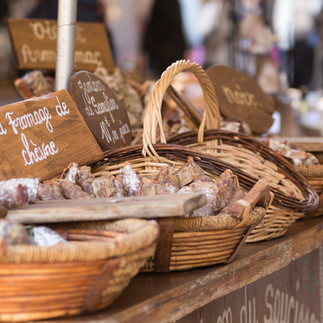




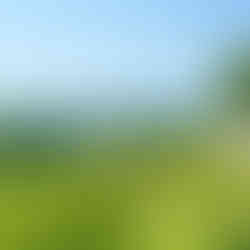




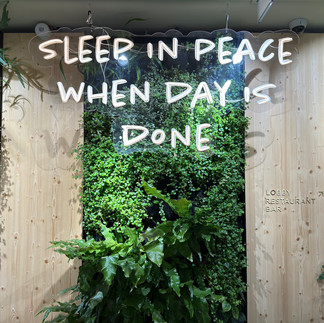





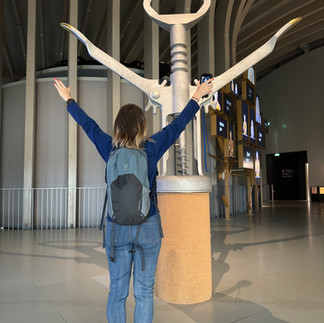













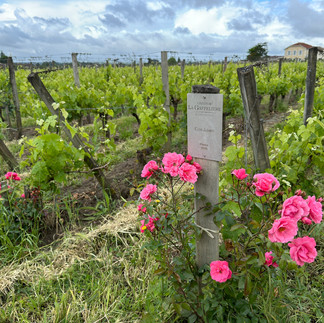





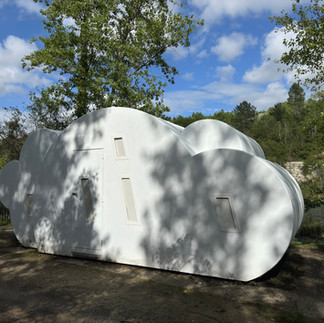


Comments